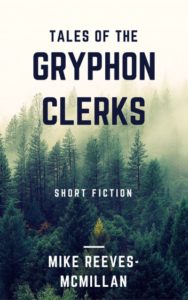In my introductory post to this series, I talked about the common Western template for a heroic story: a motivated protagonist faces a dynamic situation that will turn for the worse unless they struggle against fit opposition to bring about their preferred resolution, bringing all their resources and courage to bear on the problem, and paying a high price for victory.
As someone who reads and reviews a lot of books, I’ve come across a few failure modes of this popular template.
The Spoiled Protagonist
The Spoiled Protagonist has too much agency, and those around her too little. I say “her,” because although spoiled protagonists can certainly be men, the majority I’ve encountered have been women. To be fair, this is quite likely to be sample bias, since I prefer to read books with female protagonists and avoid the ones that are most likely to have male spoiled protagonists.
The term “Mary Sue” gets bandied about a lot these days, often merely indicating a woman who has agency among people who disapprove of that. The original Mary Sue, though, was the author-insert character in a piece of Star Trek fanfiction, who was better at everything than anyone else and who everyone, despite this, instantly loved and wanted to help in every way they could. This is more or less what I mean by the Spoiled Protagonist, but the emphasis isn’t necessarily on her ability so much as on the fact that everyone treats her as the promised Chosen One, even when she isn’t actually explicitly a promised Chosen One in the world of the story.
Characters who ought to make her follow the rules and wait her turn and prove herself like anyone else seem to lose all ability to do so; they become her obedient lackeys, sometimes at the risk of their jobs or their lives, or shower her with gifts, for no real reason except that the Spoiled Protagonist is the author’s darling and every other character exists only to serve her (except the villain, who exists so she’ll have someone to defeat quite easily). This is generally dull to read, and also annoying.
The Spoiled Protagonist is such a wish-fulfillment fantasy of agency that she distorts the entire plot and the behaviour of everyone around her, making her also a form of the Plot Black Hole.
The Plot Black Hole
A plot hole is a logical issue with the plot, something that wouldn’t really happen, but has been stuck in and glossed over so that the plot will unfold according to the author’s desires.
A plot black hole is my term for when a plot hole grows so large that everyone’s behaviour is gravitationally distorted around it. All the characters are puppets of the author’s predetermined plot, and will behave in the most ridiculous fashion to bring it about. As an example, in a book I read which I am contractually prevented from naming, someone who eventually turns out to be the villain’s minion releases the protagonist from prison, which she could not otherwise have escaped, and where she was waiting to be probably executed; reunites her with the only weapons that can stop the villain; and takes her to where the villain is, all (apparently) so that the villain can have a good gloat and a shock reveal, and then escape. (To be pursued, of course, by the protagonist and soundly defeated.)
The Plot Back Hole not only distorts the actions of the characters; it distorts the laws of probability, and sometimes physics. Hence the next failure mode: the Convenient Coincidence.
The Convenient Coincidence
Something has been concealed in an obscure location for a century. Just as the villain is about to finally retrieve it (with no particular obvious reason for having waited so long), the protagonists happen by and discover it – just a few hours ahead of his arrival. The timing is a complete, convenient, and thoroughly unlikely coincidence.
This actual example from a book I read recently is one of the more glaring uses of the Convenient Coincidence (and not the only one in that book, either). The Convenient Coincidence is the opposite of character agency. It’s a forcing of fate, which drops the characters into a situation, or helps them resolve it, with no effort or even intent on their part.
Sometimes, as with my opening example above, we don’t find out until later that the Convenient Coincidence was a Convenient Coincidence; perhaps the author is hoping we won’t notice. I notice.
There are a couple of sub-categories of Convenient Coincidence as a failure of agency, which I call the Convenient Eavesdrop and the Cavalry Rescue.
The Convenient Eavesdrop
The Convenient Eavesdrop is a plot device, a way to work around limitations of point of view and character knowledge. It’s generally a clumsy way, and a failure of character agency. If you’ve ever seen the British spoof of Enid Blyton’s Famous Five books, Five Go Mad in Dorset, you may remember how the writers mocked the frequent use of the Convenient Eavesdrop in not only Blyton’s books, but books for young people in general. The villains are overheard saying, “Rhubarb, rhubarb, secret plans, rhubarb, rhubarb…”
The thing about being young is that nobody tells you anything. If you’re to find out much about what’s going on among the adults, you pretty much have to overhear them talking, unless they’re very modern adults who believe in discussing things with kids. But the thing about the Convenient Eavesdrop is that it happens, not because the character has set out deliberately to find out the information, but by complete accident. The protagonist is in exactly the right place at exactly the right time to overhear the precise conversation that will advance the plot, however unlikely that may be. J.K. Rowling is guilty of the Convenient Eavesdrop, for example, when Harry and his friends are teleporting randomly around Britain during Deathly Hallows, and just happen to be exactly where they can overhear some people they know talking about events in the wizarding world that they have no other way of finding out about, but that they must know in order for the plot to progress. They weren’t trying to find this out; they were just handed the information as a gift from above.
This, authors, is why I will never not call you out for a Convenient Eavesdrop. It’s deprotagonizing. If you absolutely must have the characters find out some information through eavesdropping, make them work for it. Make them go looking for the information; have them hide in wait for the villain to have a conversation they know or hope is coming, at risk of being discovered. Make the information they get ambiguous, so they have to keep working to confirm it, or act on less-than-adequate knowledge. Or flip the trope, and have the villain maneuver them into something that seems like it’s a Convenient Eavesdrop, but the villain is fully aware of their presence and takes the opportunity to misinform or mislead them. Don’t just give them the information on a plate with parsley round it because they happened to take a walk one night.
The Cavalry Rescue
The Cavalry Rescue is, of course, a staple of fiction. All seems lost, and then the other character(s) who went off to do something else – possibly abandoning the main characters in a fit of pique (looking at you, Ron Weasley), possibly with another assignment, possibly having been feared lost – suddenly turn up in the nick of time and rescue Our Heroes. There are ways to make it work, and there are ways to have it be a failure of protagonism.
When Gandalf turns up at the Battle of Helm’s Deep, it’s a Cavalry Rescue that’s been set up in advance. He’s told the other characters to expect him at a certain time. The challenge in this kind of scenario is for the main group to hold out long enough to be relieved, and you can get some good tension out of the question of whether they will manage this.
But when a Cavalry Rescue comes thundering in at the exact right time and there’s been no pre-planning, and the rescuers just happened to turn up at this moment for no particular reason except that it saved the author’s plot, that’s a failure in my eyes. A failure of agency, specifically, like any fortunate coincidence.
The Penelope Pitstop
Speaking of rescues, there’s another failure mode of agency that I call the Penelope Pitstop, which dates me. The original Hanna Barbera Wacky Races cartoon from the 1960s, which I watched as a child in the 70s, featured exactly one woman, who was thrown in at the last minute and constructed entirely out of stereotypes (as was the style at the time). Penelope Pitstop, while clever and resourceful in many ways, as soon as she fell into the clutches of the villain (which happened with monotonous regularity) would go completely passive, cry “Hayulp! Hayulp!” in her southern belle accent, and wait to be rescued, which she inevitably would be. I understand things are not as dire in the more recent remake.
The Penelope Pitstop is a pattern I see over and over in fiction, particularly, for some reason, fiction set in the 19th century – whether it’s the more adventurous type of Regency romance; steampunk; or gaslight fantasy. The typical way it plays out is that we’re told the heroine is brilliant and self-reliant, but what we’re shown is that she makes one stupid, reckless decision after another, from each of which she has to be rescued by a man. In particular, she falls into the clutches of the villain, almost always because she’s gone off by herself with no backup and without telling anyone where she’s going, and he threatens her with author’s choice of terrible fate, only to have the hero burst in at the critical moment and prevent his dastardly plan.
An associated trope is Reeves-McMillan’s Shiv, which I’ve taken the liberty of naming after myself (in imitation of Chekov’s Gun). This is where the captured heroine does something, such as fashioning a shiv from a bit of broken glass, that promises us that she’s going to take some kind of decisive and effective action – but she signally fails to shank the villain with it, and it’s all a bit of a let-down.
I’d love to see the Penelope Pitstop (and Reeves-McMillan’s Shiv) retired, and replaced with heroines who, if they are captured (through no fault of their own), are quite capable of facing down the villain and engineering their own escape – or, better yet, rescuing the hero. Things can certainly be a bit scary while they’re working towards that end, of course, as long as it doesn’t just become a Gunboat.
The Gunboat
The Gunboat is what I call the pattern of bombarding the character with adversity, and then allowing them a relatively easy, linear win. It is not the same as showing them struggling against fit opposition, certainly not through the lens of agency; they’re helpless for a while, and then get offered an easy escape that they don’t have to work for much.
I understand where it comes from: the adversity bombardment, with no apparent options, is a common real-life experience, and if that’s the end of the story it’s unsatisfying. There must be an escape if the ending is not to be simply depressing. I’m also a tender-hearted author, and a professional problem-solver, and I’ve been known to give in to the period of suffering followed by an escape – “earned” not by the character’s efforts, but by their simple endurance – rather than put in the extra effort to turn it into a conflict.
And I do suspect that there’s a way to do the Gunboat right, because endurance of suffering is something that deserves a more important place in fiction. I’ll discuss this more in my final post in this series, when I talk about diverse experiences of agency. I’m not sure what the Gunboat done right exactly looks like, though. Is it “I’m not going to take this anymore”, a change from passive to active? Perhaps. Is it looking for escape over and over, not finding it, giving up, and then being offered one risky opportunity and deciding to take it? Perhaps. I’m reasonably sure, though, that “character suffers… suffers… suffers… suffers… suffers… escapes by being handed a solution” isn’t how to do it right.
What all of these failure modes of agency in fiction have in common is that the character gets a result that they didn’t work for; the author just gave it to them in order to move things along. If you’re going to follow the Western template of an active protagonist, in my view the protagonism needs to be constant. The protagonist definitely shouldn’t succeed all the time, but they should strive all the time, and any progress they make should be through striving – not through an unlikely coincidence arranged by the author, or another character offering them help for no reason, or getting rescued while helpless and passive. There are other modes of fiction, of course, and in my next post I’ll discuss the different approaches to agency in different genres and subgenres; but if your chosen mode is the motivated character in a dynamic situation striving for a goal against fit opposition, write that, and not the story of a series of lucky accidents.
If you struggle to do so, by the way, I found Jack M. Bickham’s book Scene and Structure enormously useful in helping me write stories that flowed naturally from a character’s pursuit of a goal.
Not every story, of course, needs to be written that way. In the next post, we’ll look at genre expectations about agency.





